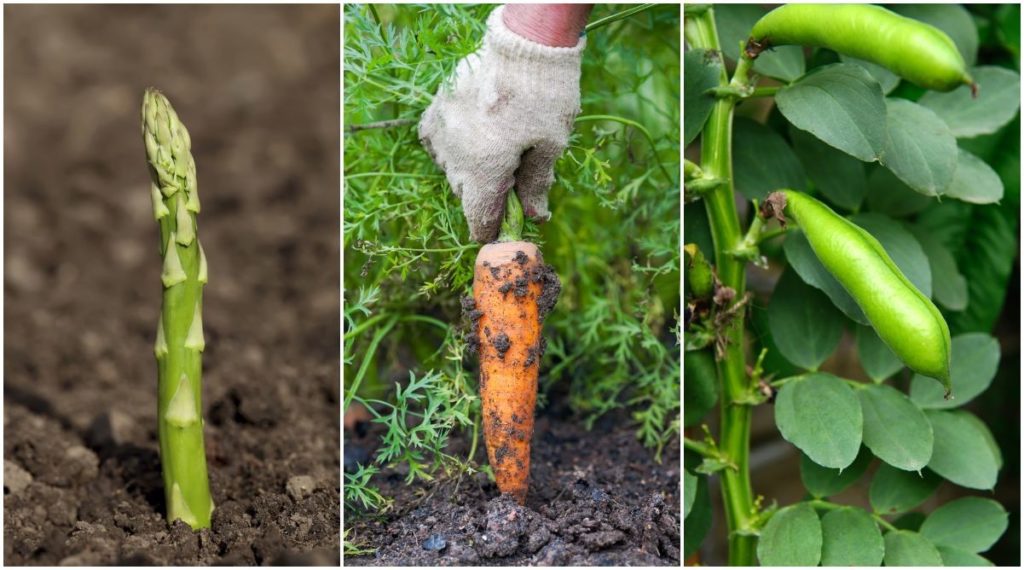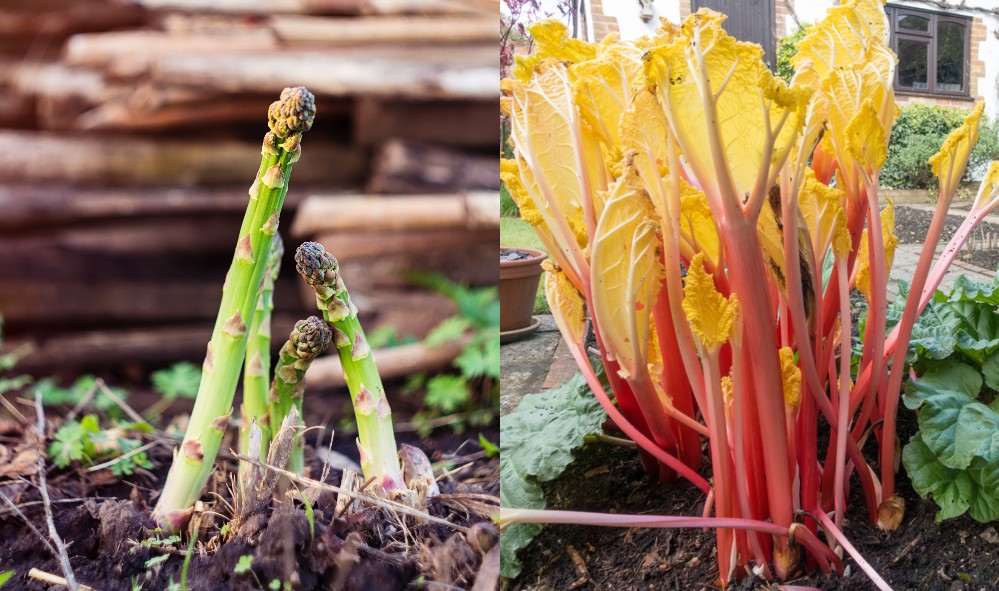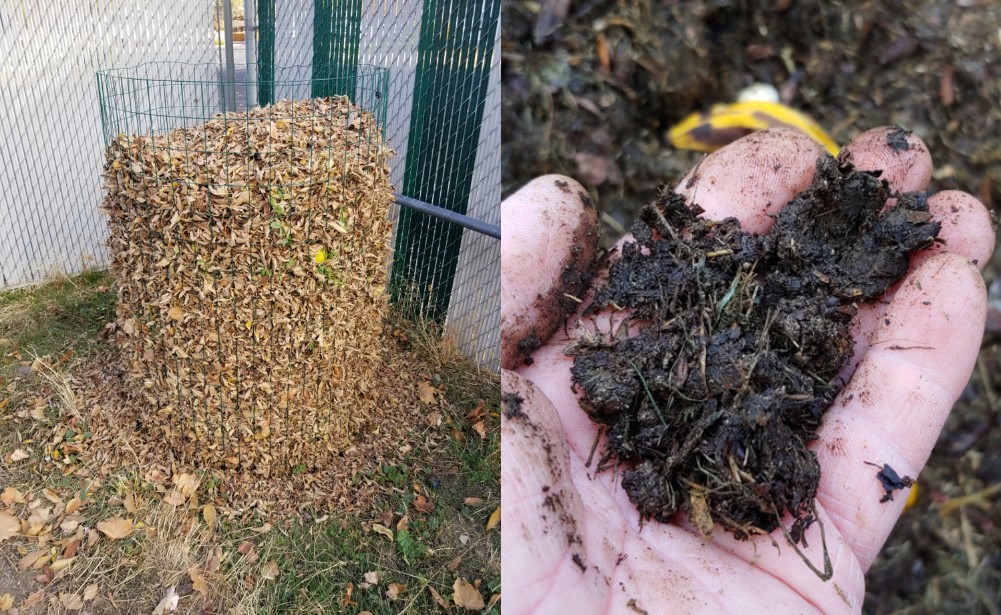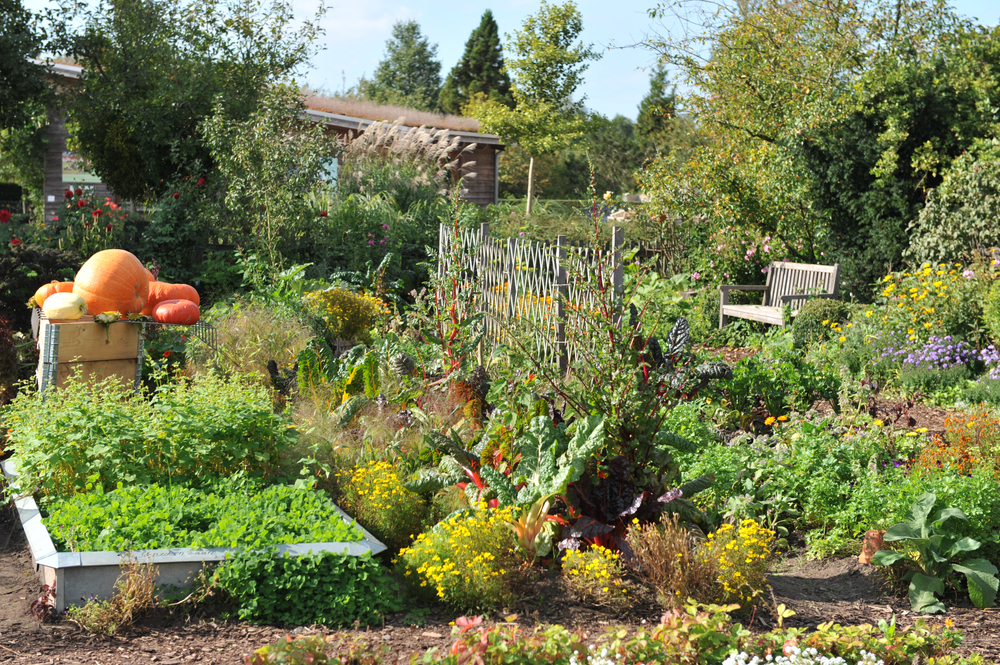
Outside of the coldest months, there is always something to do in the garden, whether it be planting, weeding, dealing with pests, saving seeds, drying herbs, amending the soil or harvesting veggies aplenty.
Come to think of it, there is still gardening to be done in winter too, though it is more mindful than physical.
Examining seed catalogs, designing garden layouts and dreaming up what your garden should look like in a perfect season – not that there ever is one.
It is best to always be prepared for anything, even if that means replanting 3 times, due to pouring rains and rotten seeds. This spring our garden had a very rough start, yet it is still going strong here in late August-early September.
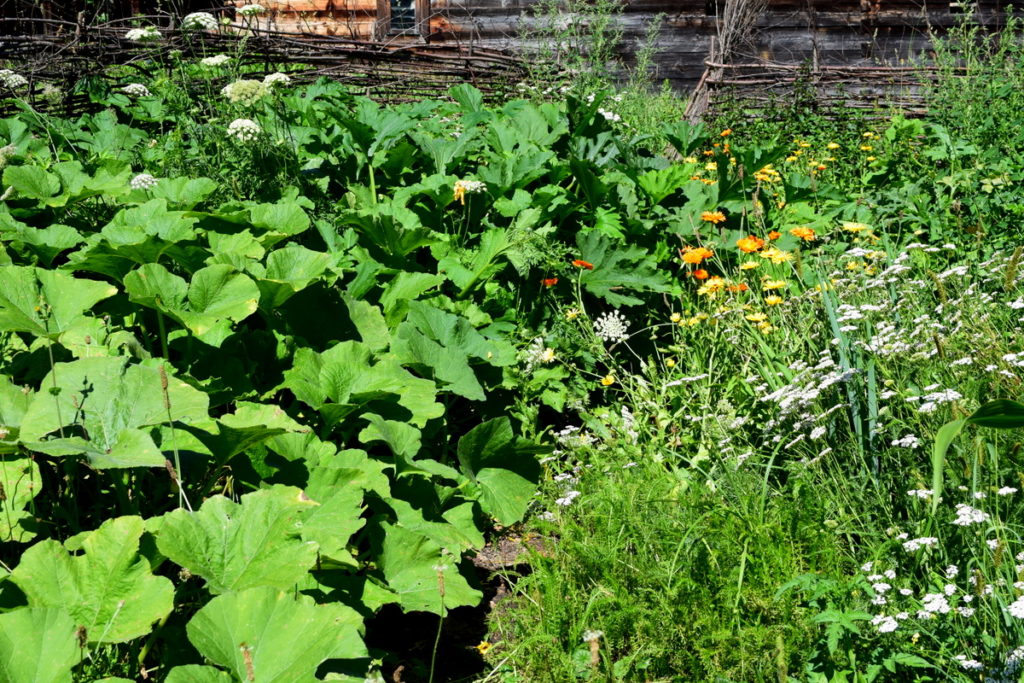
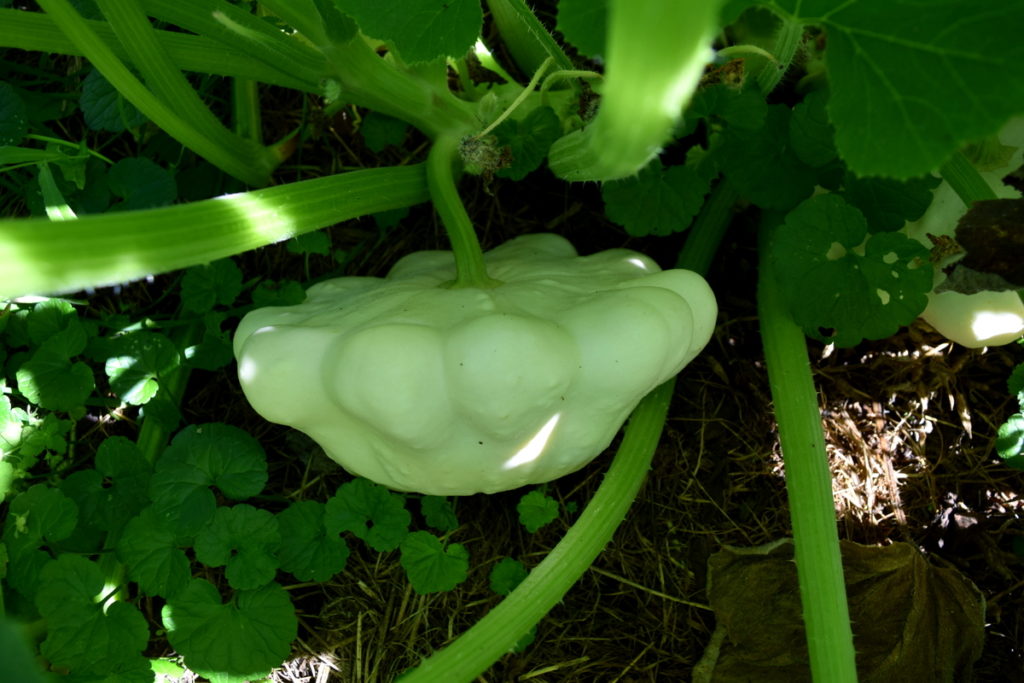
Preparation is half the fun of gardening, a little physical work (to help keep you in shape) and some determination, to produce homegrown food, will make caring for a garden completely worthwhile.
On the brink of autumn, what is a gardener to do?
Well, that depends greatly on where you are, what planting zone you are in, how the weather and the climate is changing, what plants you have left to harvest and preserve.
It also depends on how you wish to continue, or to end, the year.
Is your garden full of annuals, or does it contain some perennials that soon need attention?
Are you ready to plant more fruits and vegetables, or remove some plants that haven’t been performing well enough to keep?
Take a moment and think about the future of your garden before getting started with your September gardening chores.
Make a list in your mind, or on paper, of all the things you would like to accomplish and see if you have enough time to achieve all of your gardening goals.
Appraise your garden’s strengths and weaknesses while you imagine how you could work better with it. Applying more permanent garden paths, switching to total organic production or trying a new way of gardening, such as not digging it at all.
Depending on where your garden grows, a few, or many of the following September garden chores will apply.
Always do what is right for you and your lovely green space.
1. Continue with harvesting
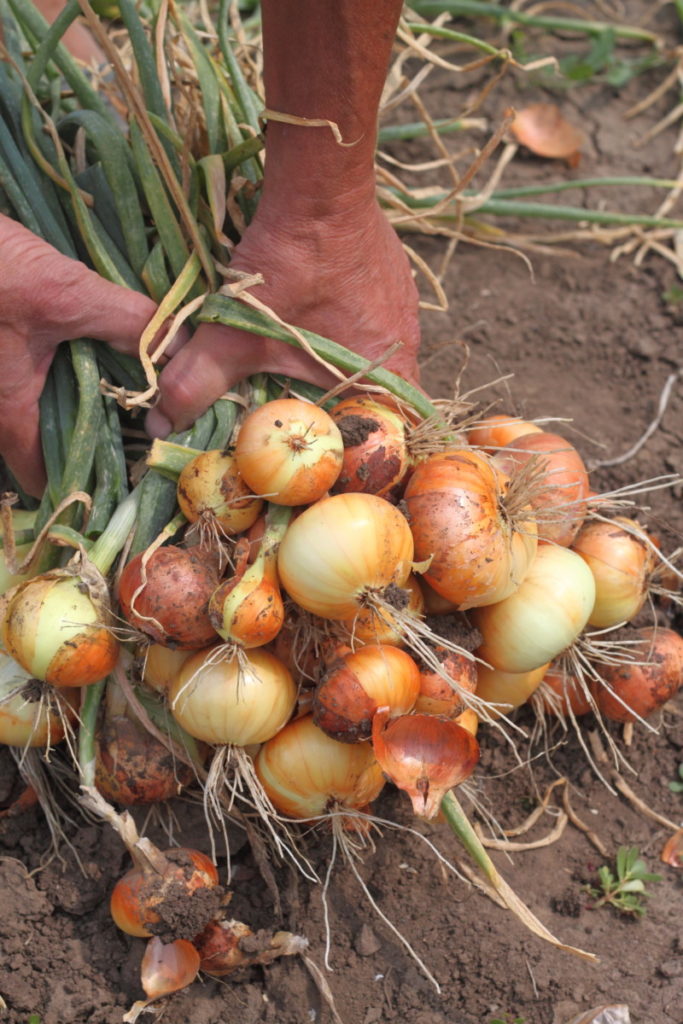
The end-of-season harvests can be just as exciting as plucking the first ripe tomatoes from the vine. You may find several large zucchini, and even larger pumpkins, lurking under leaves that are beginning to speckle and curl from the gentle shock of gradually cooler nights.
Again, depending on what you have planted and successfully grown, also taking your location into consideration, you may be still harvesting the following vegetables this September:
- beans
- broccoli
- cabbage
- cucumbers
- zucchini
- summer squash
- winter squash
- melons
- eggplants
- tomatoes – you can even encourage green tomatoes to ripen faster!
- lettuce
- spinach
- potatoes (dig before first frost!)
- sweet potatoes
- onions
- peppers
- Swiss chard
- rutabagas
- turnips
- parsley
- mustard seed and more
Beyond the vegetable garden, September is the time to begin harvesting apples, pears and plums with enthusiasm.
If it has been a fruitful season, your garden will still have plenty of surprises awaiting for you in September. But the season is quickly coming to a close, so enjoy those last harvests before the first frosts!
At the same time, be prepared to preserve them, save seeds, or get ready to clear the ground and make space to plant some more vegetable seeds.
2. Preserving your harvest
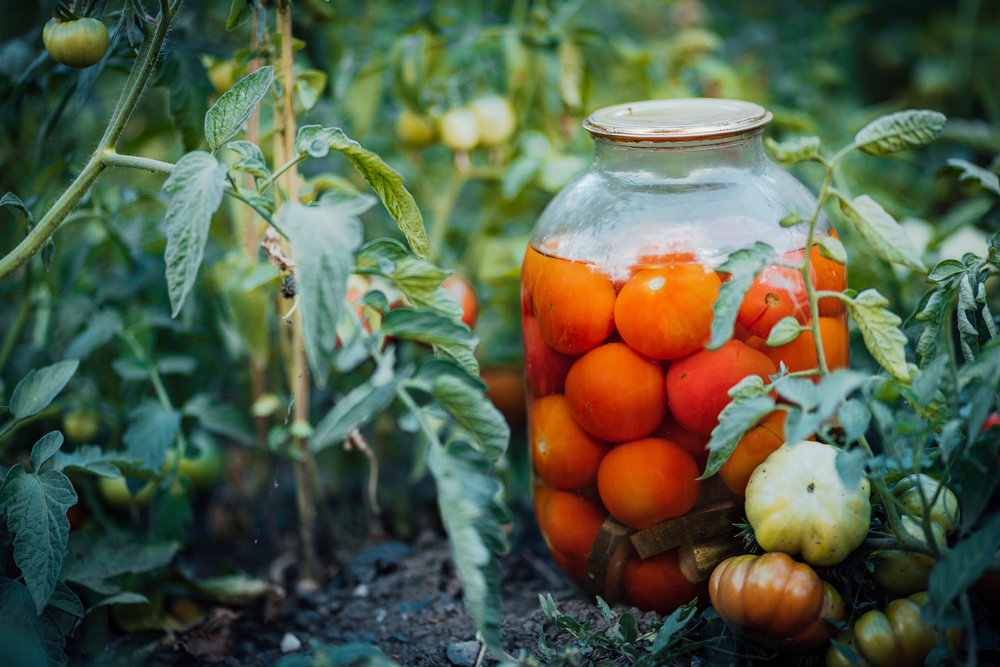
There are always several ways to preserve a harvest, ranging from air-drying herbs, to canning, freezing and dehydrating the excess.
If you are new to stocking up on homegrown food, take it one step at a time. In other words, don’t try to learn everything new all at once.
For example, if you are just learning to can your garden crops, stick to trusted recipes that you know will work out.
Pick up a copy of the Ball Complete Book of Home Preserving, for starters, then try out new recipes as your garden allows.
If you are growing winter squash and other pumpkins that will soon be harvested, think about where you will store them.
Find our guide to curing and storing winter squash and pumpkins here.
As you are busy preserving your garden crop, don’t forget to continue eating and enjoying it every day too!
And one more thing before we move on – don’t forget about making flavored vinegars (we currently have nasturtium flowers soaking in apple cider vinegar) and herbed salts too. These will make great gifts come holiday time.
3. Saving seeds
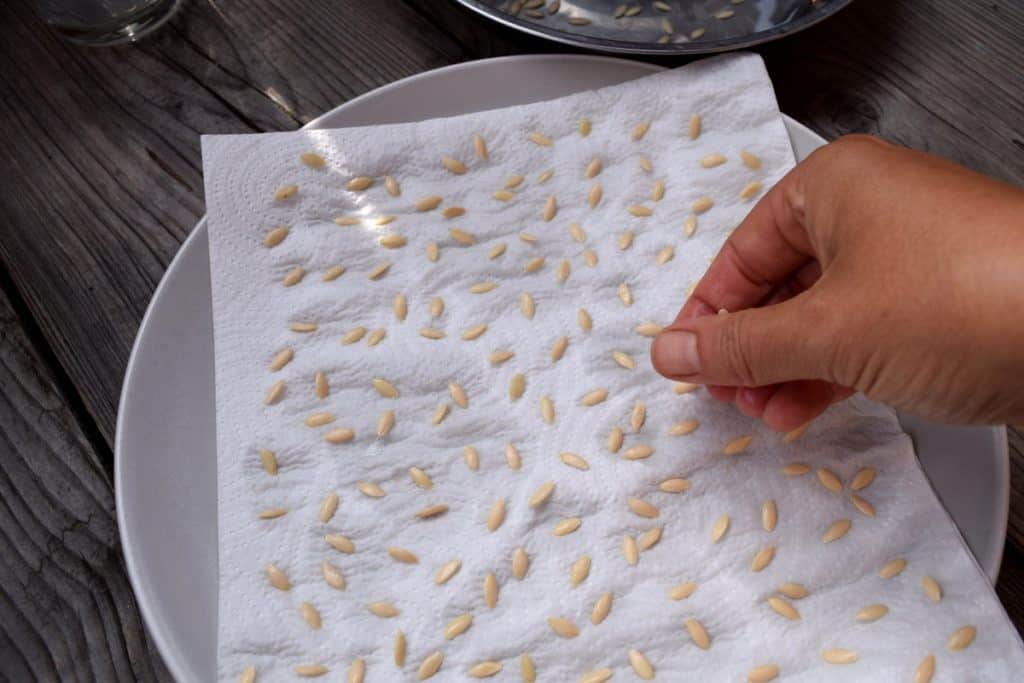
Fall is also the time of saving seeds to be planted next year.
If you are seeking to be self-reliant, or truly self-sufficient, you will not want to skip this September garden chore.
At the moment, we are harvesting mustard seeds and rocket seeds, but by the end of September the largest of zucchinis will be mature enough to save. We will also be saving radish seeds and pumpkin seeds.
Saving basic garden seeds is not rocket science. These articles will get you started along your seed saving way:
The Secret To Successfully Saving Tomato Seeds For Next Year
How To Save Cucumber Seeds (With Photos!)
4. Planting fall veggies
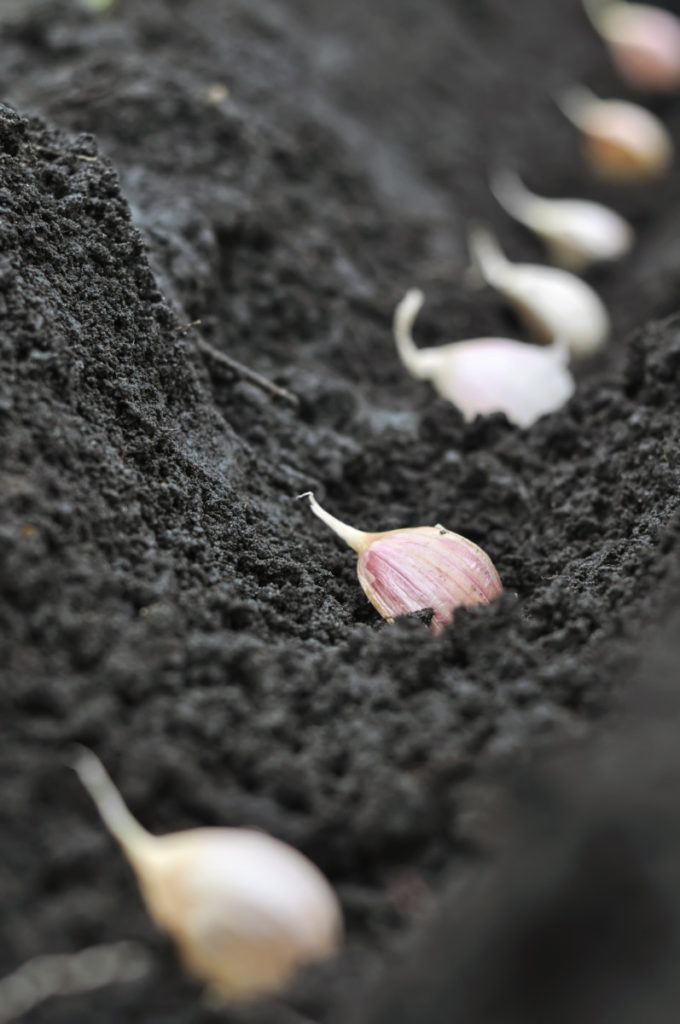
No, not necessarily for eating this season, but to obtain an earlier spring harvest instead. Which is just as nice, because sowing seeds now, in September, means that some of spring gardening work is already done, and working ahead can only bring good things to your garden.
If the weather where you grow is still hot and more summer- than fall-like, you may want to hold off till the end of the month, or even wait until October to plant out your onions and shallots.
Sometime soon, though, you should be making space in your garden for fall-planted garlic. Be sure to clean your garden beds first before planting, which we will get to in a moment.
In the southern states, many gardens are now beginning to fall into cooler weather, with less strikingly hot sun. Now is the time to plant an “autumn garden”, full of cool-weather crops such as spinach, lettuce and other quick- growing greens.
Even in the northern states, including the Midwest, arugula, collard greens, radishes, spinach and lettuce can still be planted. What you need to be aware of, is the first expected frost date for your area.
No matter where you are, there are still plenty of vegetables you can plant in September.
It may be that you want to extend the growing season to the best of your ability, to get the most out of fall planting. You can accomplish this by the use of row covers or cold frames, that protect from unexpected frost.
5. Begin planting edible perennials
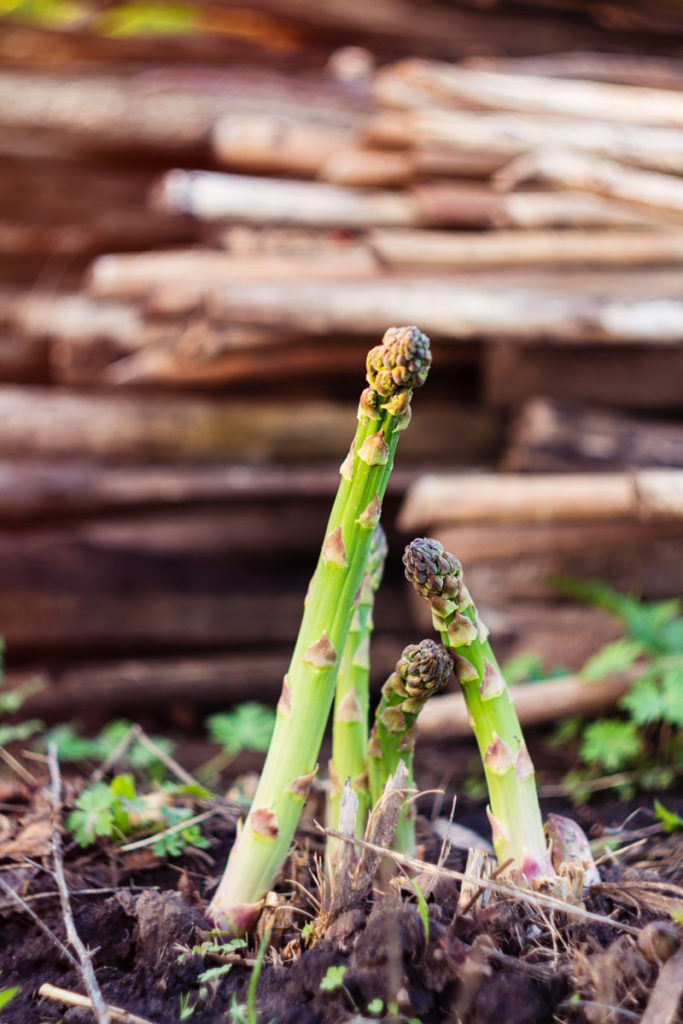
Outside of annuals, it is also time to think about planting edible perennials. These will help to ensure that you have a more reliable crop to harvest throughout the year – and for many years at that.
There are so many great reasons to add perennials to your garden, including the fact that they are often low-maintenance, perennials are often more nutritious than fast-grown annuals, plus they extend your growing season while contributing positively to the quality of your soil.
Some perennials can even be grown on slopes, helping to reduce erosion from summer rains and rapidly melting snow.
Here is the quick list of perennials that can be planted not only in September, but later in autumn as well:
- asparagus
- daylilies
- Jerusalem artichokes
- rhubarb
- walking onions
- salad burnet
- saffron crocus
- stinging nettle
- berry canes and bushes
- fruit and nut trees
Read more about planting fall perennials here:
6. Start making leaf mold
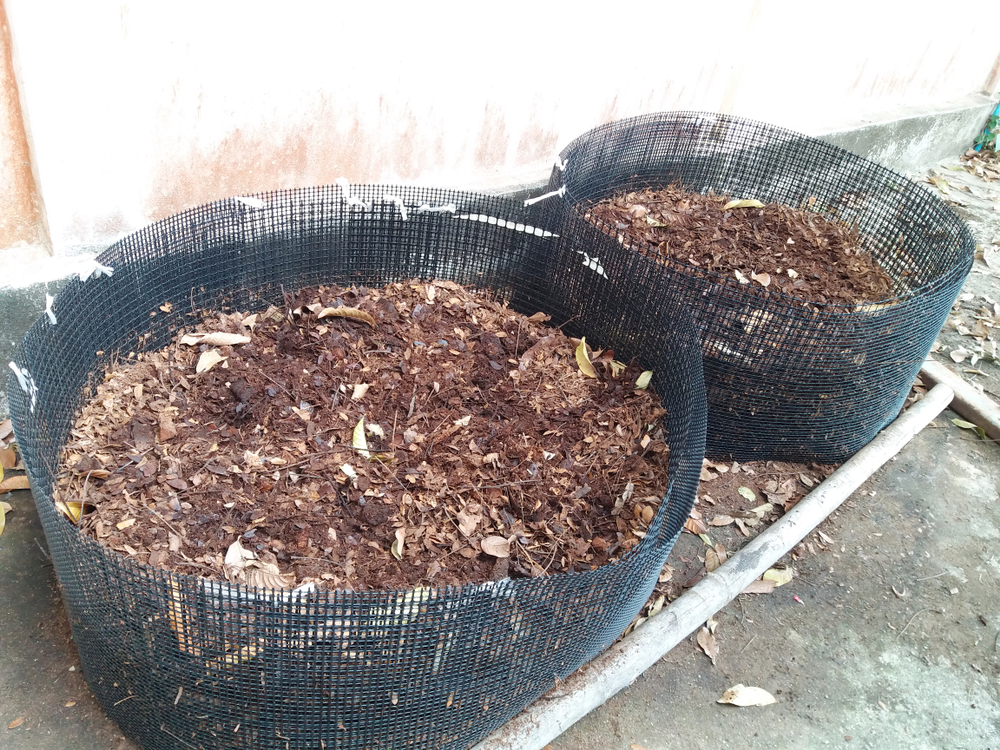
There are times when it makes perfect sense to leave the autumn leaves on the ground – right under the trees they fall from, where they add directly to the soil fertility. Everything from hedgehogs to worms will appreciate their presence.
And there are times when it makes sense to pick them up, not just for the sake of an area looking clean.
If you have large trees in your yard or garden, and the leaves begin to fall on paths or paved areas, they may become slippery with the decaying leaves. That is no fun to walk or ride a bike on.
Leaves that fall into standing water such as a small pond, can also lead to rotting vegetation. Rake them up before they blow into the water.
However, instead of burning them, or sending them out to the curb, think about starting a batch of leaf mold first.
When the colorful leaves start dropping, think of it as nutrients for free and turn your fallen leaves into gardener’s gold.
7. Tidy up your garden
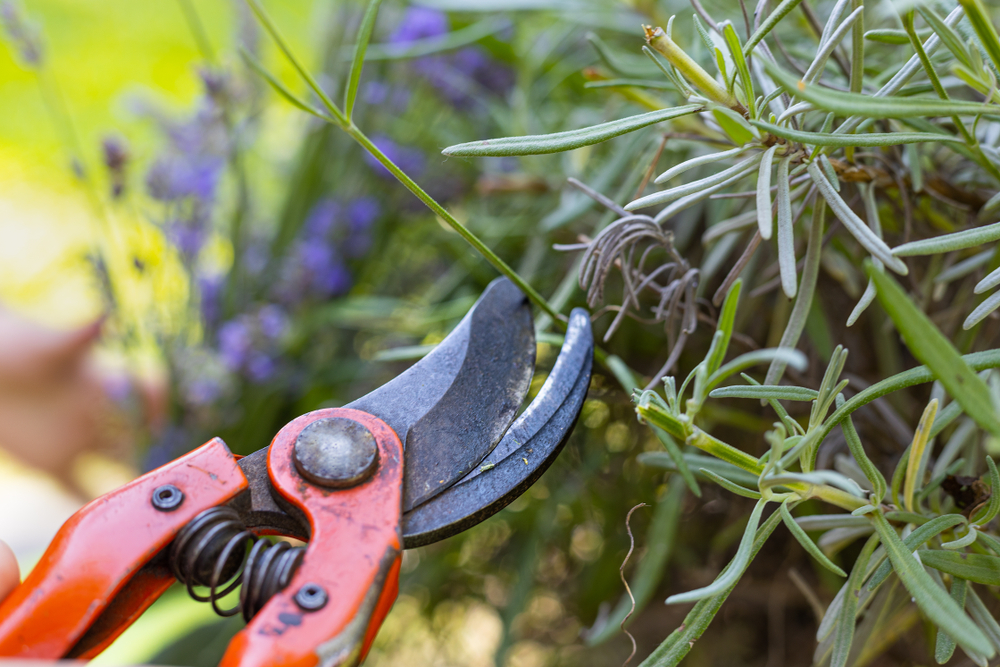
Hopefully the September evenings are growing cooler and that you are able to spend more time out in the garden.
First things first, start pulling any of those unsightly overgrown weeds. It is okay, they happen to every garden. Be sure to dispose of the seeds properly so they have less of a chance to come back next year.
Also take this time to examine your garden plants. If they are showing signs of disease, cut them back and dispose of them, burning them if the weather and local regulations allow. Do not, however, add them to your compost bin.
You can also use this beginning month of autumn to cut back plants that are done blooming. Currently we are deadheading roses, though you may also use this time to prune back other perennials in your landscape such as:
- bearded irises
- bee balm
- catmint
- daylilies
- lavender (best pruned in late summer)
- mountain bluets
- peony
- salvia
- yarrow
Get your favorite pair of pruners sharpened and get ready for some exercising, bending and stretching!
8. Plant a cover crop
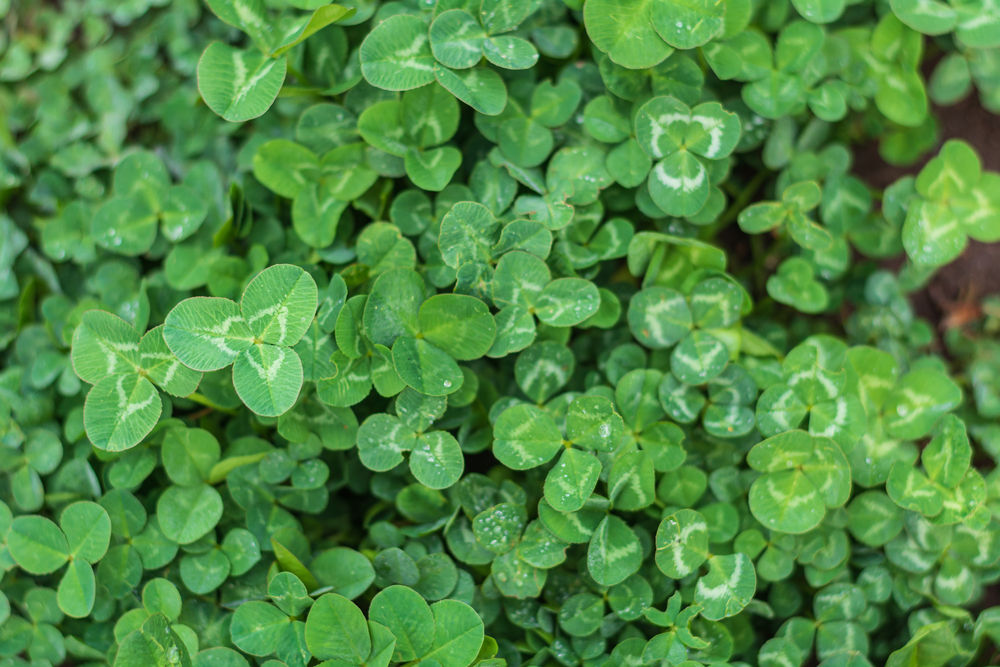
Cover crops have long been used to add nutrients back into the soil. Not only do they contribute to soil fertility, they also improve the soil structure, as well as preventing soil erosion (from otherwise exposed, bare winter soil) and attracting some late pollinating insects.
It is possible to plant cover crops either in spring, letting them grow through the summer, or in fall, which is what most gardeners choose. This way, the soil can remain covered all throughout the winter months, and when you are not growing vegetables.
So what cover crop do you need? It depends in part on what nutrients you wish to add back to the soil.
In fall, you can plant the following cover crops successfully, once you are done harvesting your garden crops, that is:
- fava beans
- oats
- clovers
- hairy vetch
- annual ryegrass
- winter rye
To determine which cover crop is right for your garden, head to your local seed store and ask questions. Then make sure that the timing is right, still keeping that first expected frost date in mind.
9. Divide perennials
When is a good time to divide perennials?
After the weather has chilled down and before the soil freezes. That is the simplest of answers.
However, it also matters what kind of plant you are dividing, how wet or dry the soil is, and where to find time to do it sooner rather than later. September is good, October is okay, but generally any later than that and you should wait for spring.
You might also be asking yourself, what are the benefits of dividing perennials?
Here are the most common benefits: dividing perennials gives them more space to grow, prevents overcrowding, it helps to manage the size of the plant (not letting them get too leggy, or bushy, competing for light and soil nutrients), and it also leaves you with more plants to fill your landscape.
Naturally, you can sell your divided perennials to create a side income from your garden too.
Don’t make it such a daunting task though, dividing your perennials every 3-4 years should be sufficient.
10. Keep an eye out for the first frost
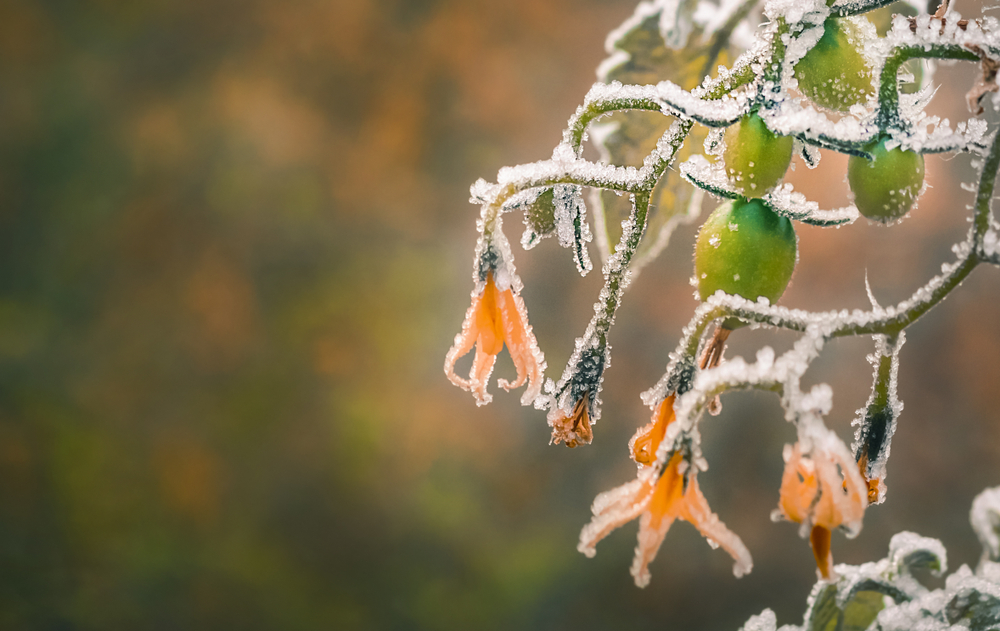
As mentioned several times throughout this article, be aware of the first expected frost, for it is bound to come, most times when you aren’t even expecting it. One night it just sneaks into the garden, covering your kale and cabbages with an icy glitter, and then your crop may be done for the season.
This cold, of course, is not a problem for Brussels sprouts, but for tomatoes that have not quite yet reached maturity, it can be.
If looming frosts bring your garden produce indoors, there are still ways to salvage it. Try making your own version of homemade zingy green tomato salsa or sample something from 20 more recipes using green tomatoes.
If you are truly prepared, you’ll be ready with row covers, blankets, bed sheets, mulch, straw/hay or cloches to see your plants through the cold nights, and back into the warm, sunny days.
If you have pumpkins, turnips and sunflowers still out there facing the autumnal sun, you may also want to use this month of September to make a scarecrow for your garden.
Just be sure to move it around your garden from time to time, to keep the crows at bay. If nothing else, it is a fun way to add some fall decor to your waning garden.

Get the famous Rural Sprout newsletter delivered to your inbox.
Join the 50,000+ gardeners who get timely gardening tutorials, tips and tasks delivered direct to their inbox.


